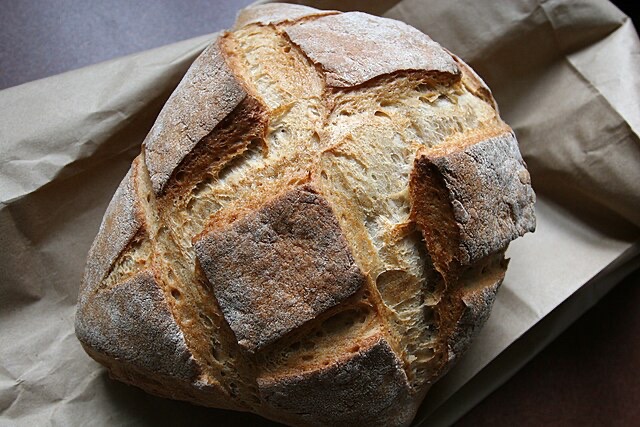Bread is one of the most universally loved and consumed foods in the world. From warm sourdough loaves to buttery croissants and quick white sandwich slices, bread is a staple that finds its way onto plates in nearly every meal. But despite its popularity, bread—especially the processed kind—often comes under fire in health and nutrition circles. Whether you’re cutting carbs, avoiding gluten, or simply trying to clean up your diet, giving up bread is a common starting point for many people trying to make a change.
But what actually happens to your body when you cut out bread? Is it all weight loss and glowing skin, or are there some unexpected side effects along the way? Let’s dive into the real effects—good and bad—of saying goodbye to bread.
1. You May Lose Water Weight Quickly
Bread and Carbohydrates: The Glycogen Connection
One of the first things people notice after ditching bread is a sudden drop on the scale. But don’t pop the champagne just yet—most of that early weight loss is likely water. Here’s why: bread is rich in carbohydrates, and for every gram of stored carbohydrate (in the form of glycogen), your body holds onto about 3 to 4 grams of water.
When you stop eating bread and cut your overall carb intake, your body taps into these glycogen stores for energy. As the glycogen gets used up, the water bound to it is also released, leading to that rapid drop in water weight.
How Water Retention Is Affected
This shift can be especially noticeable if your previous diet was high in refined carbs. Less bread means less water being retained, and that translates to less bloating and a leaner appearance. Some people find their rings fit better, their faces look less puffy, and they generally feel “lighter.”
However, this isn’t fat loss—it’s just your body adjusting its water balance. The upside? That early success can be a great motivator to keep going.
2. Your Cravings Might Intensify at First
Bread, Sugar, and Brain Chemistry
If you’ve ever felt an almost magnetic pull toward the bread basket at dinner, you’re not alone. Bread, especially the white and fluffy kind, is a refined carbohydrate that converts quickly into glucose in your body, giving you a fast energy hit. This surge of sugar stimulates the release of feel-good neurotransmitters like dopamine—similar to what happens when you eat candy or ice cream.
When you suddenly stop eating bread, your brain notices. And it protests. Loudly.
Coping with Initial Withdrawal Symptoms
During the first few days—or even weeks—you might find yourself craving not just bread, but other sugary or starchy foods too. Mood swings, irritability, and low energy can all accompany the transition.
The key to surviving this phase? Replace the missing bread with nutrient-rich foods that stabilize blood sugar, such as high-fiber vegetables, healthy fats, and protein. Hydration and sleep are also crucial. This phase passes, and when it does, most people find their overall cravings drop dramatically.
3. You Could Feel More Energetic Over Time
Blood Sugar Spikes and Energy Crashes
While bread can give you a quick jolt of energy, that high is usually followed by a crash. Most commercial breads—especially white or ultra-processed varieties—have a high glycemic index, meaning they cause your blood sugar to spike and then plummet. That rollercoaster can leave you feeling sluggish, moody, and hungry again too soon.
How Cutting Bread Stabilizes Energy
Once you eliminate bread and stabilize your carbohydrate intake, your blood sugar becomes more balanced throughout the day. This leads to steadier energy levels, fewer midday crashes, and better mental clarity.
You may also notice you don’t need that afternoon coffee or sugar fix just to get through the day. Many people report feeling sharper, more focused, and even sleeping better when they ditch the bread and level out their energy supply.
4. Your Digestion Might Improve or Change
Gluten and Digestive Sensitivity
Bread is often a major source of gluten—a protein that many people have trouble digesting. While only a small percentage of the population has celiac disease, a larger group experiences non-celiac gluten sensitivity. Symptoms can include bloating, stomach pain, constipation, diarrhea, and fatigue.
If bread was causing mild irritation to your digestive system, removing it can lead to noticeable improvements. You may feel less bloated, experience more regular bowel movements, and feel more comfortable overall.
Impact on Gut Health and Bloating
But it’s not just about gluten. Many commercial breads also contain additives, preservatives, and excess sodium that can disrupt gut flora or cause bloating. When you cut those out, your gut gets a chance to heal.
On the flip side, if you cut out bread and don’t replace it with other sources of dietary fiber, you might actually see some digestive issues—like constipation—at first. The trick is to make sure you’re still getting plenty of fiber from vegetables, legumes, seeds, and whole grains like quinoa or oats.
5. Your Skin May Clear Up
Processed Bread and Inflammation
Believe it or not, what you eat shows up on your skin. Refined carbs like white bread are known to spike insulin levels, which can trigger inflammation in the body. That inflammation can manifest as acne, rosacea, or other skin flare-ups.
When you remove bread—especially the heavily processed kind—you may see a noticeable improvement in your skin. This is especially true if you’re replacing it with whole, unprocessed foods that support cellular health.
Hormonal Balance and Diet Link
There’s also a hormonal connection. High-carb, high-glycemic foods can mess with your body’s hormone balance, particularly insulin and androgen levels, which are both linked to acne. Cutting bread might help regulate those hormones and improve skin clarity.
Many people who eliminate bread from their diets report fewer breakouts, brighter complexions, and more even skin tone within just a few weeks.



